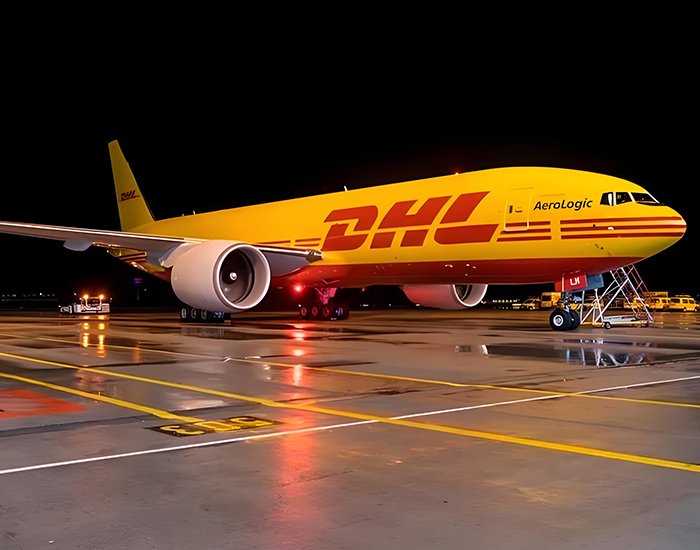

Cancel
Clear the records
Historical record
Clear the records
Historical record
The U.S. small parcel tariff exemption policy has changed its face, drawing attention to the cross-border e-commerce industry
Recently, a piece of news about the US tariff policy has drawn widespread attention from the cross-border e-commerce industry. US President Trump signed an executive order to suspend the cancellation of the "minimum" tariff exemption policy for small packages from China under $800, which enables low-priced small packages from China to continue entering the US market in the previous duty-free manner. However, this policy has undergone many repeated adjustments before.
The "minimum" tariff exemption policy for small parcels was originally a tariff system aimed at promoting the facilitation of cross-border trade. According to this policy, imported goods with a value lower than a specific threshold can enjoy the preferential policy of exemption from customs duties. The current policy of the United States can be traced back to the Customs Act of 1930. Currently, imported goods with a value of no more than 800 US dollars are allowed to enter the country duty-free. This not only simplifies customs procedures and reduces administrative costs, but also brings convenient and cost-effective cross-border shopping experiences to American consumers.
However, recently, the US tariff exemption policy for small parcels from China has been changing frequently as if it were "changing its face". On February 1st local time, Trump signed an executive order to abolish the duty-free policy for small parcels imported from China. On February 4th, the United States Postal Service announced the suspension of accepting inbound parcels from the Chinese mainland and Hong Kong until further notice. On February 7th, Trump signed another executive order, suspending the cancellation of the tariff exemption policy for small parcels from China and restoring the previously cancelled duty-free provisions.
In fact, many major economies around the world have adopted tax exemption policies for small parcels. Sun Yi, a senior equity partner at Beijing DeHeng Law Offices, introduced that although this is not a strict international common practice, in order to promote trade facilitation and simplify customs procedures, many countries and regions will set up tax exemption thresholds for small amounts of goods. Economies such as the European Union, the United Kingdom, Japan, Australia, Brazil and Turkey have either implemented tax exemption policies for low-value imported goods at present or in the past. China also exempts a single shipment of goods with a tariff value of less than 50 yuan from tariffs. For imported cross-border e-commerce retail goods with a single transaction limit of 5,000 yuan and an annual cumulative limit of 26,000 yuan, the tariff rate is temporarily set at zero.
Regarding the previous cancellation of the "minimum" tariff exemption policy for small parcels from China by the United States, Liu Ying, a professor at Capital University of Economics and Business, believes that for many years, Chinese goods have held an important position in the global market due to their high cost performance. The core purpose of the United States' adjustment of its tariff policy this time is to reshape the trade balance through tariff means and attempt to weaken the cost performance advantage of Chinese goods.
Although the current policy has been postponed, if the "shoe" eventually lands, it will have a profound impact on market participants in both countries. Liu Ying predicts that if the policy is implemented, the cost for American consumers to purchase Chinese goods will increase. They may reevaluate their purchasing channels, choose goods carefully, and even reduce their purchase frequency. And China's commodity manufacturing enterprises and e-commerce platforms
Taiwanese enterprises and logistics companies will also be impacted to varying degrees.
Sun Yi also pointed out that once the policy is implemented, cross-border e-commerce merchants and platforms that rely on the direct mail model for small parcels will be significantly affected. A rough estimate suggests that the cost for cross-border e-commerce enterprises in China to sell small cross-border parcels will increase by 10% to 30%. Coupled with customs clearance fees, the overall cost may rise by nearly 40%. Meanwhile, the customs clearance time has been extended from 2 to 3 days to 7 to 15 working days, which may lead to congestion at the port, affect the timeliness of logistics, and impact the market share of related companies.
However, industry insiders say that although the United States' tightening of the duty-free policy for small parcels poses challenges to China's cross-border e-commerce enterprises, it also prompts them to adjust their business strategies. For instance, enterprises can switch to the general trade method, re-label after entering the United States. Although this increases the customs clearance cost, it can avoid the uncertainty of direct mail customs clearance. Or, by using overseas warehouse services, goods can be transported to warehouses within the United States in advance and then delivered to consumers from these overseas warehouses. This not only reduces logistics costs and speeds up the delivery process but also enhances customer satisfaction. Sellers can reduce their reliance on a single market and mitigate the risks brought about by policy uncertainties by making early plans for overseas warehouse storage and optimizing supply chain management.
To cope with possible new changes in the tariff environment, Sun Yi believes that enterprises can start from the following aspects:
First of all, enhance policy sensitivity. Enterprises should closely monitor the changes in tariff and tax policies in their target markets, accurately interpret the policies, deeply analyze their specific contents, assess potential risks, and formulate response strategies. For instance, in response to the possible increase in tariffs, risks can be mitigated by diversifying suppliers, relocating manufacturing locations, etc.
Secondly, enhance one's own core competitiveness. Optimize the product selection strategy, increase the added value of products, enhance market competitiveness by improving product quality and innovative design, etc., in order to alleviate the negative impact of the tariff increase.
Furthermore, attach importance to the global supply chain layout. Realize the coordinated operation of multiple sources and markets, attach importance to the localization of the supply chain, reduce reliance on a single market, and select different business models such as direct mail, overseas warehouses, and independent stations based on a comprehensive assessment of tariff policies.
Finally, it is essential to ensure compliant operation. With the tightening of the duty-free policy for small parcels, the intensity of customs supervision and tax supervision in the destination country will be strengthened. Before making decisions, enterprises should comprehensively consider the compliance requirements of all parties. Through strict compliance reviews, they should assess the best solution before taking action to reduce the risk of violations.
Source: China Finance and Economics News




 The built-in sharing function of the browser is also very useful~
The built-in sharing function of the browser is also very useful~







